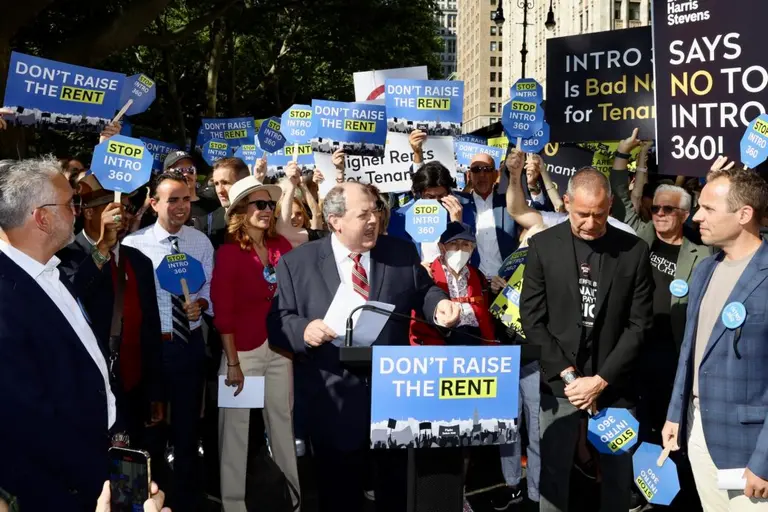Why American buyers are replacing foreigners in the luxury market

Photo via Pixabay
Over the past decade, there has been no shortage of headlines about the impact of foreign buyers on the New York City real estate market. At one time, the headlines about Russian oligarchs and Chinese business tycoons buying up luxury properties in New York City were true, but as of 2019, the real estate market in New York City and across the country is shifting. New restrictions on foreign buyers combined with a perception that the United States is no longer a friendly market for foreign buyers has slowed foreign sales. In fact, over the past twelve months, the highest closes in New York City have all been to U.S. buyers.
The myth and reality of the foreign buyer market
A 2017 report published by the National Real Estate Association found that foreign buyers purchased $153 billion worth of residential properties in the United States between April 2016 and March 2017. This represented a $102.6 billion increase over the previous 12-month period. However, the report also suggests that some perceptions about foreign buyers may have more to do with myth than reality.
First, despite widespread perceptions that most foreign buyers live elsewhere, according to the National Real Estate Association, most foreign buyers (58 percent) do reside primarily in the United States. Also, while Chinese foreign buyers were at the top of the foreign buyer list (in 2016 to 2017, they poured $31.7 billion into U.S. real estate deals), next on the list were not Russian oligarchs but rather our friendly neighbors to the north. According to the National Real Estate Association, in 2016-2017, the second most prominent group of foreign investors were Canadians, who spent $19 billion on U.S. real estate.
As for New York City, when one drills down into the data, there are indications that while foreign buyers have been purchasing many properties, especially in the luxury market, their impact may have been exaggerated. Over the past decade, New York has certainly welcomed many foreign buyers, but Americans have continued to dominate the market, and since 2017, the impact of foreign buyers has been in rapid decline. Today, both the luxury and affordable markets are dominated by domestic buyers, and most industry insiders agree that this shift is good news for American bargain hunters across the market.
Foreign buyers Are mostly gone
“If you look at the top trades in the last year, they are all to U.S. buyers,” says Victoria Shtainer, an agent for Compass and veteran of Manhattan’s luxury residential market.
According to Shtainer, the reason for the shift from foreign to domestic buyers involves many factors. First, there are increased restrictions on foreign buyers in the United States. This includes new IRS regulations that prevent foreign shell companies from purchasing properties without full disclosure. Second, in some countries, including Russia, there is growing pressure on high-index earners to invest domestically. Finally, as foreign buyers move away from the U.S. market, something else has happened—American wealth has grown.
James Morgan, who is also an agent at Compass, agrees that foreign buyers are increasingly looking outside U.S. markets to invest, but Morgan offers a few additional reasons for the shift. “A lot of foreign buyers, even those who aren’t directly affected by new regulations, no longer see the United States as a friendly market for foreign buyers.” Morgan also speculates that for buyers in the luxury market, scarcity is simply more appealing than ample supply. “When foreigners see supply increasing, it’s less appealing. This reflects the fact that luxury markets are driven by exclusivity.”
What this means for domestic buyers across the market
Both Shtainer and Morgan agree that the decline in foreign buyers is likely good news for domestic buyers and not just for those looking to take advantage of drastic price cuts on multi-million dollar properties.
“For the past few years, a lot of New Yorkers have been priced out of the market, but they are going to be able to negotiate more easily now,” says Morgan. “As units sit on the market longer, there are concessions being made—for example, around move-in dates and closing costs. Of course, we’re also seeing some price cuts.”
Most price cuts are happening in the luxury market where many properties, especially new condos, came on the market overpriced. Morgan says that most agents aren’t surprised to see prices declining: “We saw this coming 18 to 24 months ago, but the impact is now beginning to trickle down to into Manhattan’s lower-end market. I can’t speak for Brooklyn, where the market is quite different, but in Manhattan, what’s happening isn’t just impacting the luxury market.”
Shtainer emphasizes that as the market shifts away from foreign to domestic buyers, price cuts and concessions won’t be the only thing impacted. “Buyers from different parts of the world expect different types of finishes,” she explains. “American buyers generally are looking for more neutral finishes than foreign buyers, including those from Russian and China. As the market shifts back to the American buyer, this will impact on how units are finished and marketed to buyers.”
RELATED:




























